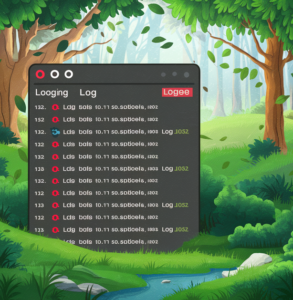Introduction:
Spring Boot has become a popular choice for building robust and scalable web applications due to its ease of use, convention over configuration approach, and seamless integration with various technologies. When it comes to data storage, MongoDB, a NoSQL database, offers flexibility, scalability, and performance, making it an excellent choice for modern applications. In this article, we’ll explore how to leverage Spring Boot with MongoDB to build powerful NoSQL-powered applications.
Understanding MongoDB:
MongoDB is a document-oriented NoSQL database that stores data in flexible, JSON-like documents. Unlike traditional relational databases, MongoDB does not require a predefined schema, allowing developers to store heterogeneous data types within the same collection. MongoDB’s scalable architecture, support for high availability, and rich query capabilities make it well-suited for a wide range of use cases, including web applications, mobile apps, IoT platforms, and more.
Key Features of MongoDB:
- Flexible Schema: MongoDB’s schema-less design allows developers to store and query data without rigid schema constraints. This flexibility enables agile development and accommodates evolving data models.
- Scalability: MongoDB supports horizontal scalability through sharding, allowing applications to scale out across multiple nodes to handle large volumes of data and traffic.
- High Availability: MongoDB provides built-in replication and failover capabilities to ensure high availability and data durability. Replica sets automatically elect a primary node and maintain synchronized copies of data across multiple nodes.
- Rich Query Language: MongoDB’s query language (MongoDB Query Language or MQL) supports a wide range of query operators, aggregation pipelines, and geospatial queries, enabling developers to express complex query logic efficiently.
- Indexing and Aggregation: MongoDB supports indexes and aggregation pipelines to optimize query performance and analyze data across collections. Indexes can be created on single fields, compound keys, or geospatial coordinates.
- Document-Based Data Model: MongoDB stores data in BSON (Binary JSON) documents, which can contain nested structures, arrays, and a variety of data types. This document-based data model aligns well with object-oriented programming paradigms and simplifies data mapping in applications.
Building Spring Boot Applications with MongoDB:
To build Spring Boot applications with MongoDB, follow these steps:
- Set Up MongoDB: Install MongoDB on your local machine or use a cloud-based MongoDB service provider such as MongoDB Atlas. Create a database and collections to store your application’s data.
- Add MongoDB Dependencies: Include the necessary MongoDB dependencies in your Spring Boot project’s build configuration (e.g., Maven or Gradle). You’ll need dependencies for Spring Data MongoDB and the MongoDB Java driver.
- Configure MongoDB Connection: Configure the connection to your MongoDB database in the application.properties or application.yml file. Specify the MongoDB server hostname, port, database name, and authentication credentials if required.
- Define MongoDB Entities: Define MongoDB entities (POJOs) to represent the data stored in your MongoDB collections. Annotate these entities with Spring Data MongoDB annotations such as @Document, @Id, @Field, etc., to map them to MongoDB documents.
- Create MongoDB Repositories: Create Spring Data MongoDB repositories to perform CRUD (Create, Read, Update, Delete) operations on your MongoDB entities. Spring Data MongoDB provides built-in repository interfaces and query methods for common database operations.
- Implement Business Logic: Implement business logic in your Spring Boot application’s service and controller classes. Use MongoDB repositories to interact with the MongoDB database and perform data manipulation operations.
- Test and Run the Application: Write unit and integration tests to verify the functionality of your Spring Boot application with MongoDB. Run the application locally or deploy it to a cloud platform such as AWS, Azure, or Google Cloud Platform.
Benefits of Spring Boot with MongoDB:
- Rapid Development: Spring Boot’s auto-configuration and convention over configuration approach streamline application development, while MongoDB’s flexible schema simplifies data modeling and iteration.
- Scalability: MongoDB’s horizontal scalability and Spring Boot’s support for microservices architecture enable applications to scale out easily to handle growing data and traffic demands.
- Performance: MongoDB’s efficient storage and indexing mechanisms, combined with Spring Boot’s optimized data access layer, result in high-performance applications capable of handling large volumes of data and concurrent users.
- Developer Productivity: Spring Boot’s rich ecosystem of libraries, starters, and tools, combined with MongoDB’s intuitive query language and APIs, boost developer productivity and enable rapid prototyping and iteration.
Conclusion:
Spring Boot with MongoDB offers a powerful combination for building modern, scalable, and flexible web applications. By leveraging Spring Boot’s simplicity and MongoDB’s flexibility, developers can rapidly prototype, iterate, and deploy applications that meet the evolving needs of users and businesses. Whether you’re building e-commerce platforms, social networking sites, content management systems, or IoT solutions, Spring Boot with MongoDB provides the tools and capabilities you need to succeed in today’s fast-paced digital landscape. Embrace the power of Spring Boot and MongoDB, and unlock new possibilities for building NoSQL-powered applications that drive innovation and deliver exceptional user experiences.





